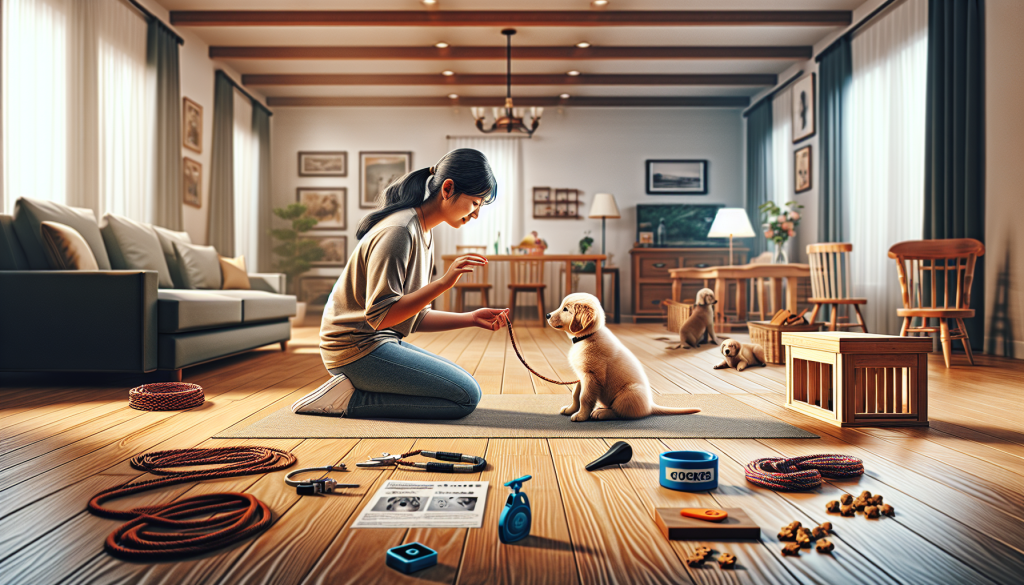If you’ve recently welcomed a playful, energetic bundle of joy into your home in the form of a puppy, you may be wondering how to teach them the vital skill of staying in one place. Whether it’s to prevent them from darting off into danger or simply to establish a sense of control, teaching a puppy to stay can be both challenging and rewarding. With a few helpful tips and some patience, you’ll soon be well on your way to having a pup who stays put when you need them to.
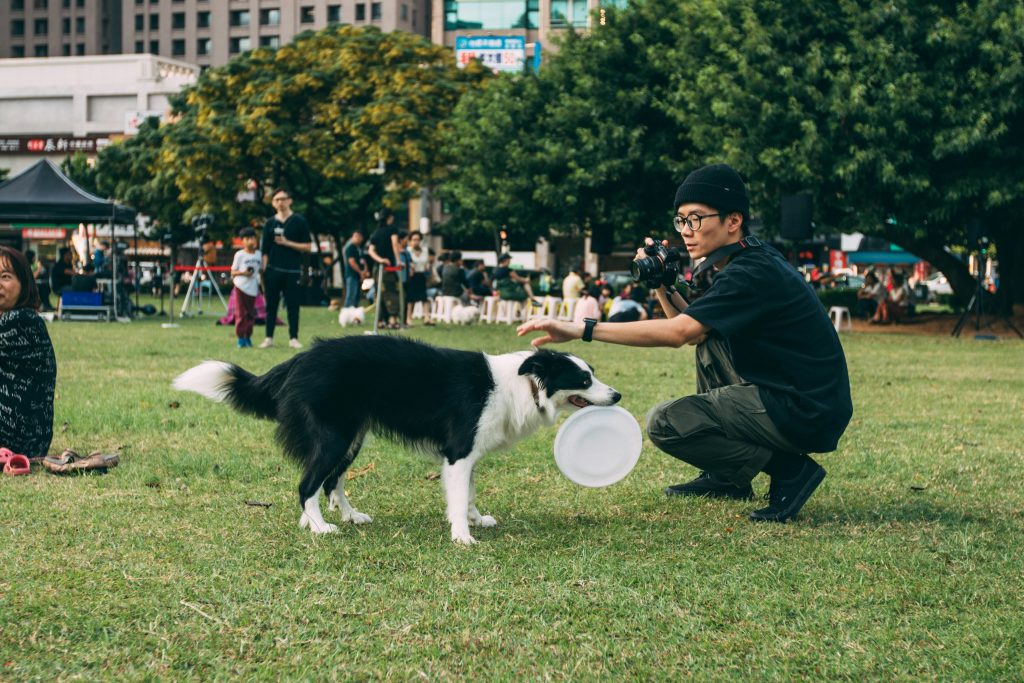
This image is property of images.unsplash.com.
Creating a Safe Environment
Removing potential distractions
When training your puppy to stay, it’s important to create a safe and distraction-free environment. This means removing any objects or toys that may attract your puppy’s attention and lead to distractions during training sessions. By eliminating potential distractions, you can ensure that your puppy is focused and more likely to successfully learn the stay command.
Securing the area
Another crucial aspect of creating a safe environment for training is securing the training area. This can be done by using baby gates or closing doors to prevent your puppy from wandering off or getting into any dangerous situations. Having a secure space will help your puppy feel more comfortable and prevent any accidents or unwanted behaviors during training.
Using a leash and collar
Using a leash and collar can be beneficial when teaching your puppy to stay. This provides you with more control and allows you to gently guide your puppy into position and prevent them from moving around. Make sure to use a properly fitted collar and leash that is appropriate for your puppy’s size and breed. A leash and collar can also be useful for ensuring the safety of your puppy when practicing stay in different locations.
The Basics of Training
Establishing trust and rapport
Building a foundation of trust and rapport with your puppy is essential for effective training. Spend quality time with your puppy, engage in playtime, and provide plenty of positive reinforcement. This will help establish a strong bond and make your puppy more willing to listen and follow your commands during training sessions.
Positive reinforcement
Positive reinforcement is a key aspect of training a puppy to stay. Reward your puppy with treats, praise, and affection when they successfully stay in place. This positive feedback will encourage your puppy to repeat the desired behavior. Remember to use high-value treats to make the reward more enticing and reinforce the positive association with staying.
Consistency and patience
Consistency and patience are crucial when teaching your puppy to stay. Use the same command word consistently, such as “stay,” to avoid confusion. Be patient with your puppy as they learn and understand that it takes time and repetition for them to master the stay command. Stay calm and avoid getting frustrated if your puppy doesn’t get it right away. With consistent practice and patience, your puppy will eventually learn to stay on command.
Introducing the Basic Command
Choosing the command word
Choosing the right command word is important for clear communication with your puppy. Select a simple and distinct word, such as “stay,” that your puppy can easily understand and differentiate from other commands. Stick with this chosen word throughout the training process to avoid confusion and reinforce consistency.
Using treats as motivation
Treats are a powerful motivator for puppies, and using them during training can help reinforce the stay command. Start by holding a treat in front of your puppy’s nose and give the command “stay.” Slowly move away while keeping the treat visible to your puppy. If your puppy stays in place, immediately reward them with a treat and praise. This positive reinforcement will encourage your puppy to associate staying with a pleasant reward.
Starting with short durations
When introducing the stay command, start with short durations. Begin by asking your puppy to stay for just a few seconds before rewarding them. Gradually increase the duration over time as your puppy becomes more comfortable and reliable with staying in place. Starting with shorter durations ensures success and builds confidence in your puppy’s ability to stay.
Building up the Duration
Gradual increases in time
Once your puppy is consistently staying for short durations, it’s time to gradually increase the time they need to stay. Start by adding a few seconds to the duration and continue to reward your puppy if they maintain the stay. Slowly build up the time, always making sure to reward successful stays. Remember to be patient and to only progress to longer durations when your puppy is ready.
Rewarding successful stays
Rewarding your puppy for successful stays is essential for reinforcing the behavior. Each time your puppy stays for the desired duration, provide them with a treat, praise, and affection. This positive reinforcement will make staying an enjoyable experience and encourage your puppy to continue obeying the stay command.
Repeating the command as needed
During the duration-building phase, it’s important to reinforce the command as needed. If your puppy starts to move or break the stay, calmly say “stay” and guide them back into position. Avoid using loud or harsh tones, as this may frighten or confuse your puppy. By repeating the command consistently and gently repositioning your puppy, they will learn to associate the word “stay” with staying in place.
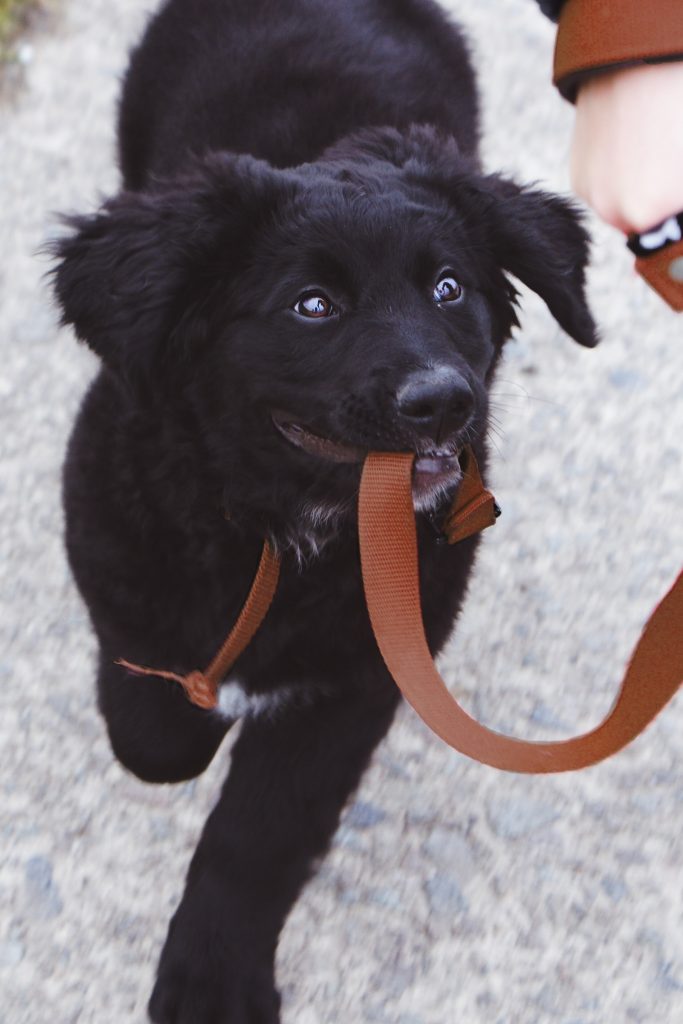
This image is property of images.unsplash.com.
Working on Distance and Distractions
Moving away gradually
Once your puppy has mastered staying in place for longer durations, it’s time to start increasing the distance between you and your puppy. Begin by taking small steps backward while your puppy stays in position. Gradually increase the distance, always rewarding successful stays. This step helps teach your puppy that they should remain in place, even if you are not in close proximity.
Adding distractions one by one
To ensure that your puppy can stay focused in various environments, it’s important to gradually introduce distractions during training. Start by adding mild distractions, such as a toy or low-level noises, and assess your puppy’s ability to maintain the stay. If your puppy remains in place, reward them. Slowly increase the level of distractions over time, helping your puppy develop the ability to stay focused despite surrounding distractions.
Proofing the command
Proofing the stay command involves practicing in different scenarios and locations to ensure your puppy can stay regardless of the circumstances. This includes training in different rooms of your house, outdoors, and in public places. Each new environment will present its own set of distractions and challenges, so it’s important to reinforce the stay command consistently. By proofing the command in various settings, your puppy will gain confidence and reliability in their ability to stay.
Working on Different Locations
Practicing in various environments
To reinforce the stay command, it’s crucial to practice in various environments. This includes training your puppy to stay in different rooms of your house, in your backyard, and in public spaces such as parks or pet-friendly establishments. By practicing in different environments, your puppy will become more comfortable and adaptable to staying in various locations.
Reinforcing the command in new places
When introducing the stay command in new places, start with short durations to ensure success. Reward your puppy for staying in the new environment and gradually increase the duration over time. Consistency is key during this stage, as your puppy needs to understand that staying applies regardless of the location.
Generalizing the stay command
Generalizing the stay command means teaching your puppy to stay in any location, regardless of familiarity. By practicing in various environments and consistently reinforcing the stay command, your puppy will learn that the command applies everywhere. This generalization is important for ensuring that your puppy stays obedient and focused, regardless of the surrounding environment.
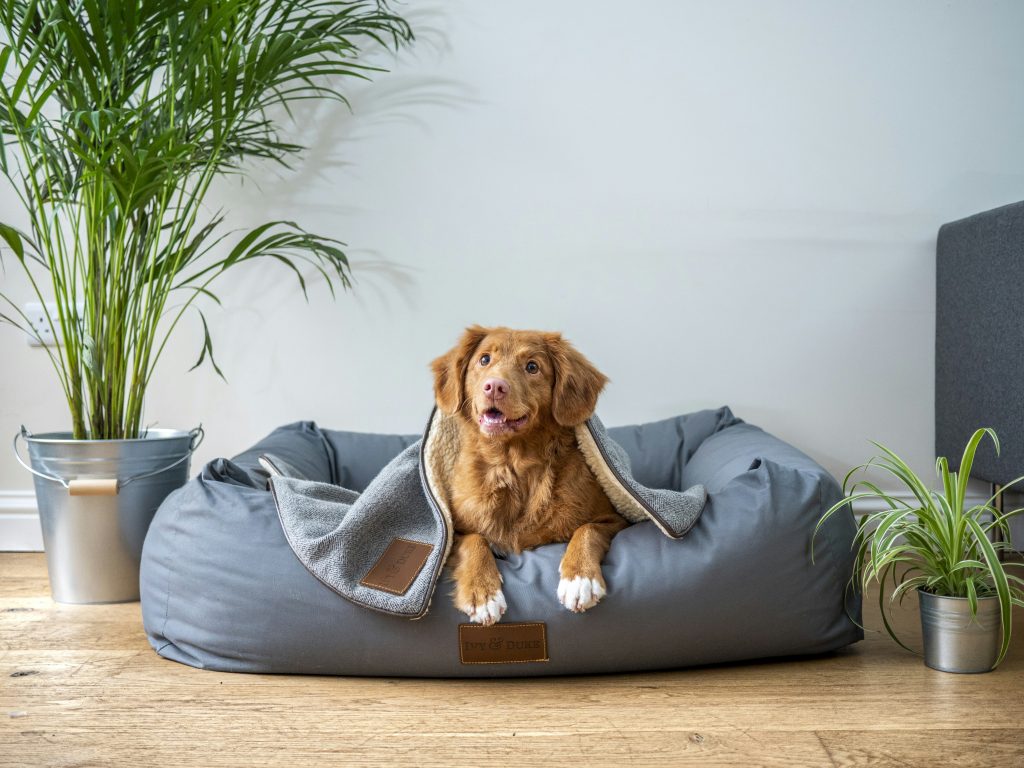
This image is property of images.unsplash.com.
Using Visual Cues and Signals
Adding hand gestures or signals
In addition to verbal cues like the word “stay,” it can be useful to add hand gestures or signals to reinforce the command. For example, you can raise your hand with an open palm to signal the stay position. Using hand gestures alongside the verbal command helps your puppy associate the visual cue with the desired behavior and makes it easier to communicate the stay command, especially in noisy or crowded environments.
Teaching a release word
A release word is important to let your puppy know when they are free to move from the stay position. Choose a distinct release word, such as “okay” or “release,” and consistently use it when your puppy has successfully completed the stay command. This cue helps your puppy understand when they can relax and resume normal activities.
Expanding non-verbal communication
Alongside hand gestures and a release word, it can be beneficial to expand your non-verbal communication when teaching your puppy to stay. This includes using body language, eye contact, and other physical cues to reinforce the desired behavior. By utilizing non-verbal communication, you can further enhance your puppy’s understanding of the stay command and strengthen the bond between you and your furry companion.
Troubleshooting Common Challenges
Dealing with restlessness and impatience
It’s not uncommon for puppies to become restless or impatient during the stay command. If your puppy starts to show signs of restlessness, such as fidgeting or attempting to move, gently reposition them and reinforce the stay command. Patience and consistency are key in overcoming this challenge. As your puppy becomes more comfortable with staying, their restlessness and impatience will decrease.
Addressing fear or anxiety
Some puppies may exhibit fear or anxiety when learning the stay command. This can be due to a variety of factors, such as past negative experiences or a naturally anxious disposition. In these cases, it’s important to create a calm and supportive environment during training sessions. Take things slowly, use positive reinforcement, and provide ample reassurance to help your puppy build confidence and overcome their fear or anxiety.
Handling failed stays
Failed stays are a normal part of the learning process, especially for puppies. If your puppy breaks the stay command, it’s important to remain calm and avoid getting frustrated. Simply guide your puppy back into position, repeat the stay command, and reward them for staying. Consistency and positive reinforcement will help your puppy understand the desired behavior and increase their success rate over time.
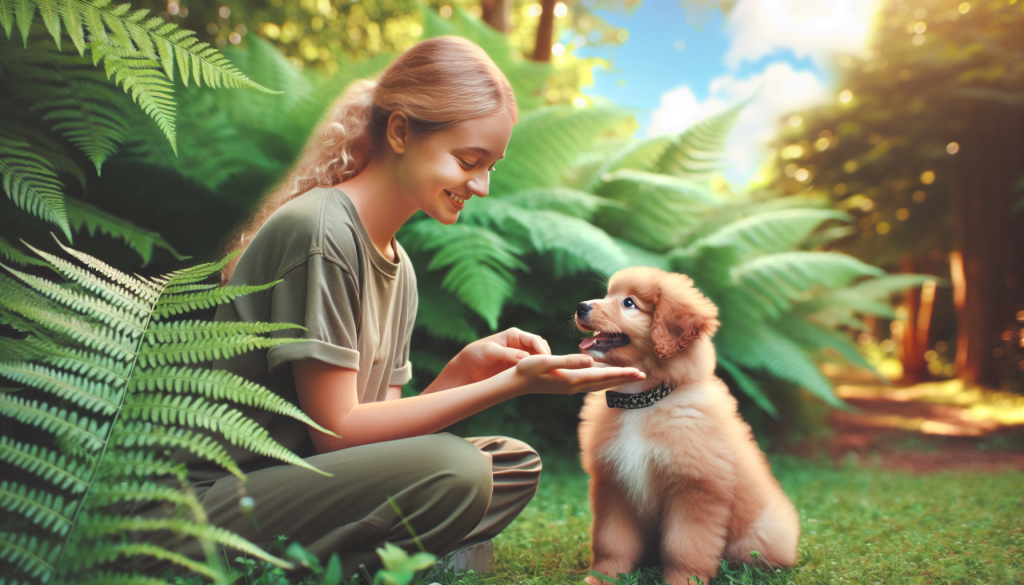
Training for Specific Situations
Training for door manners
Door manners are important for the safety of your puppy and those around them. Teach your puppy to stay when the door is open, preventing them from dashing outside or jumping on visitors. Start by practicing indoors with a door that your puppy is familiar with. Use the stay command, reward successful stays, and gradually introduce distractions such as doorbell sounds. With consistent training, your puppy will learn to wait calmly for permission to exit or greet visitors.
Teaching stay during mealtime
Mealtime can be a challenging situation for puppies, as their instincts may drive them to approach and beg for food. By teaching your puppy to stay during mealtime, you can ensure a calm and controlled environment. Begin by giving your puppy the stay command before placing their food bowl down. If they maintain the stay, reward them and allow them to eat. If they break the stay, calmly remove the food and repeat the process. Consistency is crucial in teaching your puppy to stay during mealtime.
Preparing for veterinary visits
Veterinary visits can be stressful for puppies, but teaching them to stay during these visits can make the experience easier for both you and your furry friend. Practice the stay command at home, gradually introducing medical equipment such as stethoscopes or thermometers. Reward your puppy for staying calm and cooperative during pretend examinations. This will help your puppy associate staying with a positive experience, making veterinary visits less intimidating.
Maintaining and Reinforcing the Command
Regular practice sessions
Consistency is crucial when it comes to maintaining and reinforcing the stay command. Schedule regular practice sessions with your puppy to keep their training consistent and their skills sharp. Aim for short but consistent training sessions throughout the week to reinforce their understanding of the stay command.
Occasional refresher training
Even after your puppy has learned the stay command, occasional refresher training is important. Set aside time every few weeks to practice the stay command in different environments and with various distractions. This helps reinforce the command and keeps your puppy engaged and responsive to the stay command.
Consolidating the stay command
Consolidating the stay command involves integrating it into your everyday life. Continuously reinforce the stay command by using it in various situations, such as when guests arrive, during walks, or when grooming your puppy. By consistently incorporating the stay command into your routines, it becomes a natural and reliable behavior for your puppy.
Remember, teaching your puppy to stay requires patience, consistency, and positive reinforcement. With dedication and proper training techniques, you can successfully teach your puppy to stay in a variety of situations, creating a safe and well-behaved companion. Enjoy the journey of training and bonding with your furry friend!
